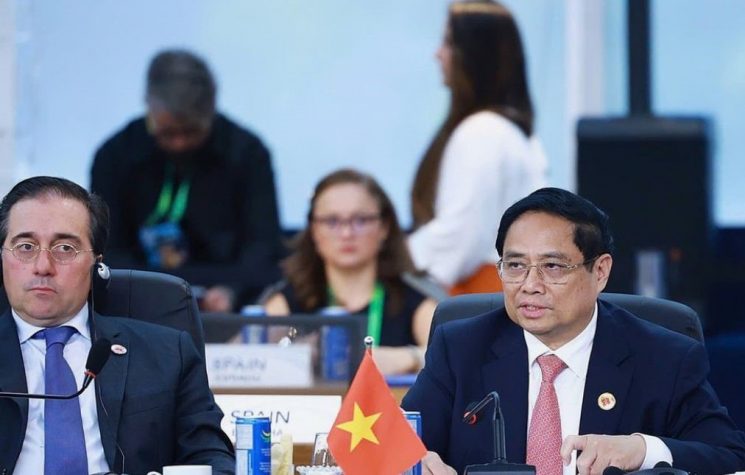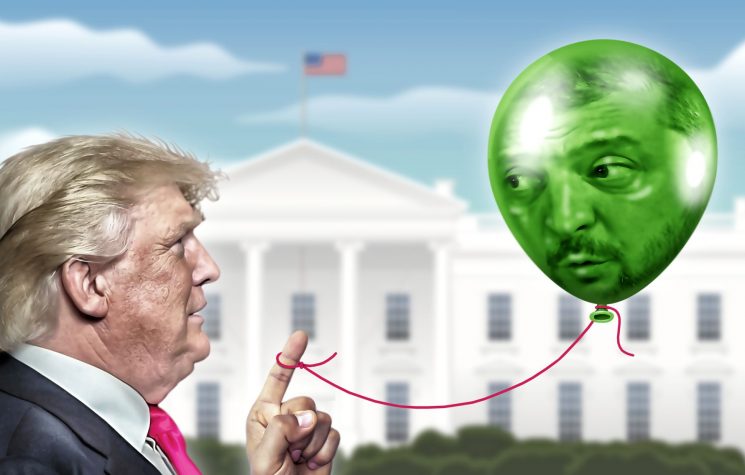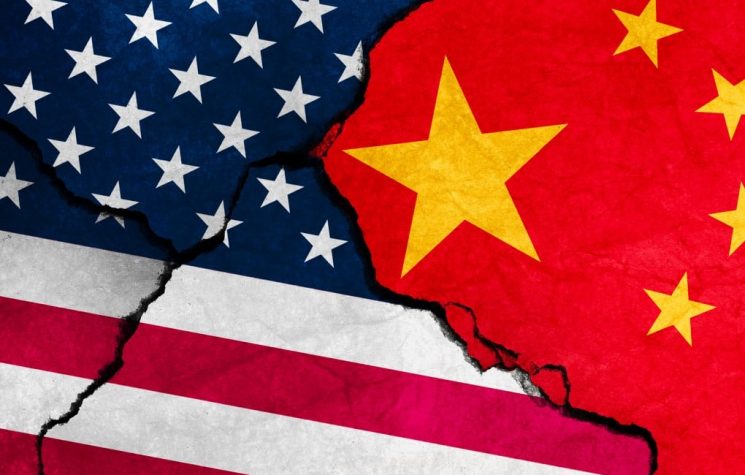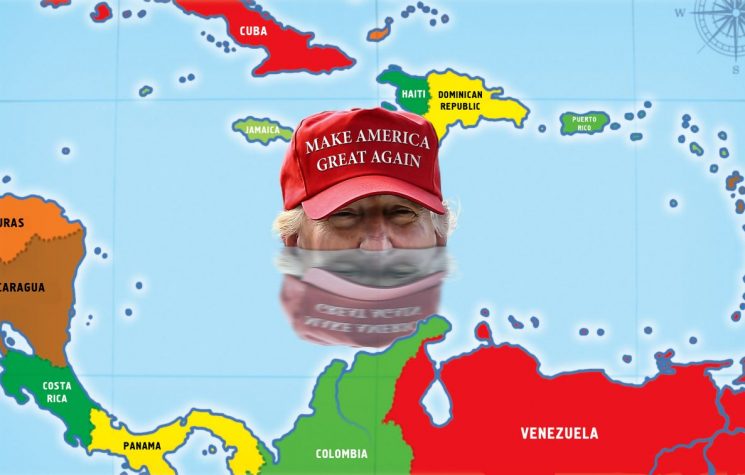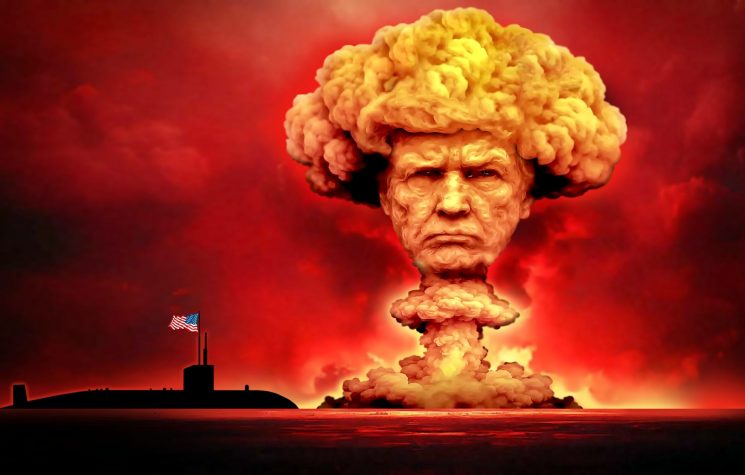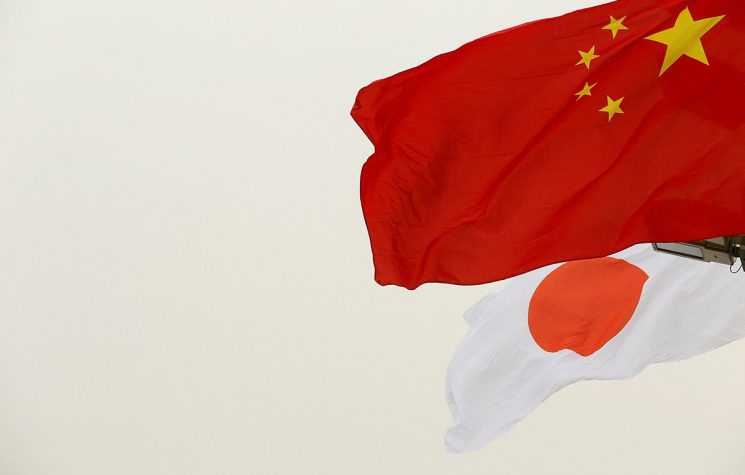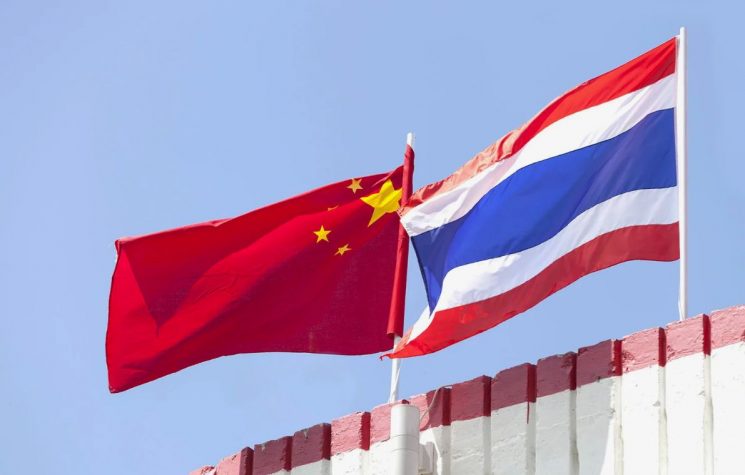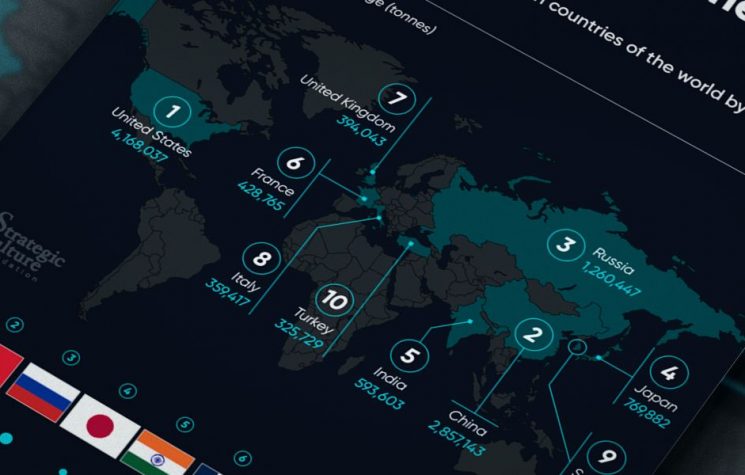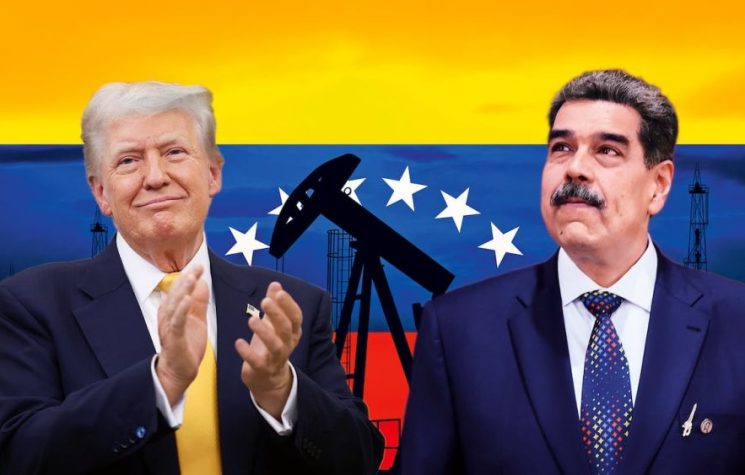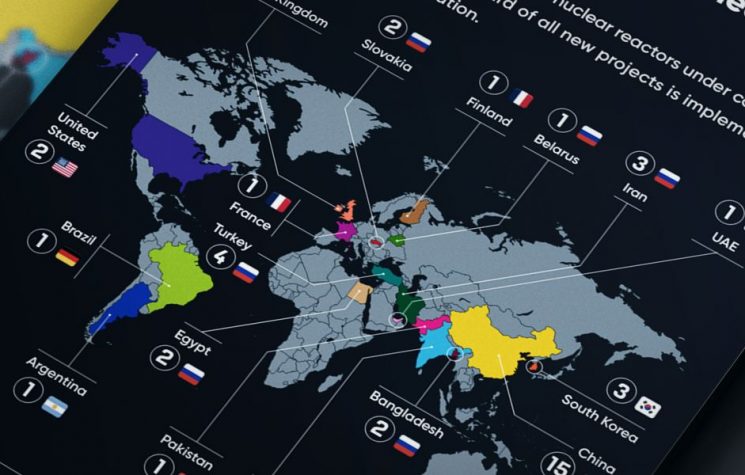Today’s Green New Deal and G7 Green anti-BRI vision have at their heart this profound misanthropic view of humanity weaved into their programming, Matt Ehret writes.
In 1975, an influential Stanford biologist named Paul Ehrlich (author of the misanthropic 1968 Population Bomb) stated that in his view, humanity’s acquisition of fusion energy was “like giving an idiot child a machine gun”. Ehrlich’s views were shared widely among the peculiar sect of scientists that have come to be known as neo-Malthusians. Ehrlich’s colleague John Holdren ruminated that developing fusion energy was undesirable because it would only enflame mankind’s “pave the planet and paint it green’ mentality.”
Third Industrial Revolution author and fringe activist-turned-international climate advisor to the UN named Jeremy Rifkind stated “the prospect of cheap fusion energy is the worst thing that could happen to the planet.”
Across the many voices of this neo-Malthusian landscape, the mantra has been the same: fusion energy is always 30-40 years away and since the world will boil over long before this day arrives anyway, why bother dreaming about it when we could start covering the globe with solar panels now in order to de-carbonize society and stop the new Armageddon?
Today’s Green New Deal and G7 Green anti-BRI vision have at their heart this profound misanthropic view of humanity weaved into their programming. While many are attracted to the concept of a clean earth, the consequences of global decarbonization to pre-industrial levels as outlined by modern technocrats will be the unfortunate, albeit planned kill off of a large proportion of the world population… unless clean and abundant nuclear power with a focus on both fission and fusion processes drive that global energy transition.
Unfortunately, the power of the Pygmalion effect runs strong amongst today’s breed of Malthusian ideologue.
As soon as a Malthusian attains a position of economic or scientific policy influence, these ideologues loose no time in sabotaging government support for all energy programs which would render their abiding faith in “human overpopulation” irrelevant and wrong.
Holdren himself lost no time in cancelling the few dwindling U.S. fusion research initiatives during his time running U.S. Science Policy under Barak Obama. But Holdren was merely following on a long tradition of sabotage.
Take for instance the slashing of fusion power research begun under the Trilateral Commission controlled Presidency of Jimmy Carter which has continued unabated until the present day.

Not only did actual funding fall far below the minimum requirements to build and activate prototypes of new designs, but starting in 1977 the funding was increasingly redirected towards “zero-technological growth” forms of energy like windmill and photovoltaic cell technology. Even conventional domains of nuclear energy research like the closing of the fuel cycle using fast breeder reactors which the USA once championed were killed under Executive Order and buried under moratoria during the 1970s. One of the key figures in this attack on fusion was RAND Corp Energy czar James Schlesigner who amplified regulatory laws and cut funding in fusion despite milestones being reached in Los Alamos and Princeton in 1976. Schlesinger’s worldview as a priest of doom was defined in a 1960 book where he said:
“Economics is the science of choice in a world of limited resources…. We have gone around the world spreading the ‘gospel of plenty’ raising the level of expectations … [but] in the nature of things, these rising expectations can never be satisfied…. We must in our strategic policy return to the days before the Industrial Revolution … [and] prepare to fight limited wars.”
This new age of limited wars was ushered in both by Kissinger’s NSSM-200 in 1974 which called for converting America’s pro-development foreign policy as exemplified by Eisenhower’s Atoms for Peace and Kennedy’s New Frontiers into a depopulation program.
Kissinger’s report didn’t mince words: “The U.S. economy will require large and increasing amounts of minerals from abroad, especially from less developed countries. That fact gives the U.S. enhanced interest in the political, economic, and social stability of the supplying countries. Wherever a lessening of population pressures through reduced birth rates can increase the prospects for such stability, population policy becomes relevant to resource supplies and to the economic interests of the United States…. Although population pressure is obviously not the only factor involved, these types of frustrations are much less likely under conditions of slow or zero population growth.”
Meanwhile Kissinger’s Trilateral Commission colleague Zbigniew Brzezinski made this fantasy world a reality through the sponsorship of radical jihadi perversions of Islam that unleashed a new age of never-ending asymmetric warfare.
Leaders within the Muslim nations resistant to this agenda and desirous of developing nuclear energy (including the Shah of Iran, President Sedat of Egypt and President Bhutto of Pakistan) were summarily killed or overthrown. Other nations of the global south who yearned for energy independence and atomic power included Argentina, Brazil, Mexico, the Philippines, India and all saw a top-down sabotage of their nuclear programs during the 1980s and 1990s.
Another zero growth Trilateral Commission priest named Paul Volcker had only recently been appointed to head the Federal Reserve despite his repeated calls for a “controlled disintegration” of the U.S. economy when in 1979, his 20% interest rate hikes made capital investments into multi-year nuclear builds financially impossible for investors (especially when combined with the mountainous environmental impact red tape which added years onto the wait times of new constructions. Under these conditions, interest payments outpaced the actual cost of production and by the mid 1980s over 130 planned new reactor builds were cancelled. While it is popular to parrot the belief that it was the 1979 Three Mile Island meltdown which resulted in the bad press and cancellation of new builds, the fact is that even before that event, 46 reactor builds had been cancelled between 1972 and 1979.
In Canada, the Federal Government stopped all new nuclear construction by the mid 1980s and cut funding for all federal fusion initiatives by 1997. The Quebec-based Tokamak at Varennes which had produced super hot plasmas in magnetic confinement was dismantled for purely political considerations in 1998 after winning world prizes as the most advanced design of its kind.
Prototypes for Stellarators using magnetic pinch effects to concentrate the flux of plasmas into controlled high-density zones conducive to fusion reactions were also cancelled for budgetary considerations throughout the 1990s-2010s leaving scientists demoralized and without either means to build machines to test their ideas, or even the use of already existent machines to investigate the ideas of others.
In the Soviet Union, where the famous Kurchatov Institute had made Russia the world leader in fusion research during the Cold War, a Malthusian policy was applied under the masquerade of “Shock therapy” during the dark years of 1992-1999 looting and privatizations. Under the watch of World Bank economists, all advanced fusion research was cancelled as the nation was absorbed into the neoliberal zombie order of post-industrial feudalism. A generation of nuclear scientists was lost to the western brain drain as their mathematical skills became put to use in the new financial supercomputing algorithms for high frequency trading and derivative-ladden betting (see Quants).
As the emergent collapse of the western neoliberal order became ever more clear for many to see by the time of the housing market meltdown of 2007, the realization that humanity’s mission to finally overcome the Malthusian demands for entropy and degrowth began to take off among Eurasian nations. While the scientific community organized for a new international project centered in the South of France known as ITER, Chinese and Russian scientists worked hard to make up for lost time in their own nations. After reverse-engineering Russia’s T-7 tokamak (discarded into a trash heap with the dissolution of the Soviet Union in 1992), China began to acquire serious skills in plasma physics becoming ever more respected members of the ITER team.
Soon work on China’s own indigenous tokamak was begun in 1998 with the Experimental Advance Superconducting Tokamak in Hefei and in 2014 a demonstration reactor was begun called the “China Fusion Engineering Test Reactor” (CFETR) which will be ready to apply the results of China’s EAST reactor and the ITER in an official reactor.
Despite constant claims of “intellectual property theft” of western science pounded repeatedly into the heads of gullible fools, China broke all world records in May 2021, creating a 120 million degree Celsius plasma for 2 minutes followed by a 160 million degree Celsius plasma for 20 seconds. Although appearing to be short intervals, these times and temperatures had never come close to reality bringing humanity closer to the goal of generating more energy output than inputed.
Russia’s parallel tokamak program titled the T-15 MD will begin producing plasmas this year.
Additionally, Russia has also nearly finalized the world’s first fission-fusion hybrid reactor at the Tomsk Polytechnic University utilizing neutrons created from fusion reactions in order to create fissile U-233 fuel. Meanwhile President Putin has emphasized on numerous occasions that fusion research will be a driving national priority for Russia over the coming years.
Russia and China have taken nuclear energy diplomacy to a whole new level in recent months with both Xi Jinping and Putin having hosted the May 19 ceremonies unveiling the construction of four new nuclear reactors in China built using Russian technology totalling 37.6 billion kilowatt hours of power. For the first time in history, African nations have access to two major powers who are enthusiastic to offer the abused continent technology transfers and funding for nuclear power with Rosatom having signed active nuclear deals with seven African nations and opened active negotiations with 15 sub-Saharan nations for nuclear builds.
Anti-Malthusian offers not seen since the days of John F Kennedy are being extended with the Belt and Road Initiative all across the world and even western developed nations targeted for disintegration under a Great Reset are being offered the opportunity to work on new energy breakthroughs that Russia and China are driving forward with.
Most importantly, Russia and China’s new commitment to jointly build a lunar base over the coming decade as well as China’s ambitious commitment to mine helium-3 on the moon cannot be seen as separate from this far-sighted creative policy outlook that is increasingly defining the Greater Eurasian Partnership.
The best expression of this call for a new age of fusion energy cooperation and diplomacy needed to reverse our international slide into nuclear war was showcased by President Putin during a July 2019 Global Industrialization Summit which I will quote at length as we consider what pathways are necessary to overcome the misanthropic closed system logic of those prophets of doom that sit upon the alter of the World Economic Forum and lust over a dystopic technocratic age of depopulation and entropy.
“We will only succeed in fusion power and other fundamental tasks if we establish broad international cooperation and interaction between government and business, and unite the efforts of researchers representing different scientific schools and areas—if technological development becomes truly global, and does not get split up, or held back by attempts to monopolize progress, limit access to education, and put up new obstacles to the free exchange of knowledge and ideas.
By the way, the International Thermonuclear Experimental Reactor (ITER) serves as a prime example of open scientific and technological cooperation. Scientists are now planning to use it to achieve controlled thermonuclear fusion. Our country is actively participating in this project and is now prepared to suggest using Russia’s scientific infrastructure for joint research, joint scientific investigation, for the international scientific teams working on nature-like and other breakthrough technologies, including unique mega-science installations.
With their help, scientists will be able to literally see nature’s processes of creation. I would like to note that such an installation has become an essential part of the interdisciplinary center for nature-like convergent technologies, in operation for more than a decade at one of Russia’s largest scientific centers, the Kurchatov Institute…
For international research teams who want to work in Russia, and for hosting large-scale interdisciplinary projects and establishing international scientific clusters, we intend to come up with the most comfortable conditions and support mechanisms…
To accomplish these goals, we intend to use the potential of our major, partially government-owned companies. As you may know, I recently visited Italy and spoke to our partners; our colleagues, there, use partially government-owned enterprises. It might seem strange, but we are following the same direction—first, because this is an international task, and second, there exist state resources that we can use in key development areas…
I believe that in this era of tectonic changes and, sadly, of increasing uncertainty, absolute values—that is, creating better living conditions and opportunities for unleashing human potential—must be a priority. Impressive technological development should serve this purpose. This is where great responsibility lies with us for the future of our nation and the world in general—, and we definitely must work together.”
In the next installment, we will look at Chinese-Russian space diplomacy in greater detail as the other side of this anti-Malthusian program that requires reciprocal breakthroughs in both microphysics and macrophysics.












